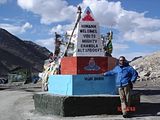
I was using a P2S Sony till now. Then I decided to pamper myself a bit so bought a bigger Canon 400d . Being one of the best entry level SLR camera its very powerful yet very convenient. Deciding the camera these days is not an easy task that too if you are running on a limited budget like mine and need the most out of your money. Upgrading later is a long story and not very convenient as SLR cameras are expensive and one expects to use it at least for a couple of years before buying a new one.
The factors I considered before deciding were:
1.PRICE !!!!! - When I started looking for the best in my budget I had different sourcing options like
a> ask some friend /relative to get one for me from the US or Singapore. That was not very convenient as international warranties are not valid in India hence I would get the camera without a warranty and will need to ask somebody for a favor.
b>Another option was to buy it from a website and get it delivered. Though this looks like a good option but I was not very comfortable paying through my CC to foreign website and again International Currier rates are high.
c>Buy it from an Indian website. I found only 2 websites http://www.ebay.in/ that i never rely on and http://www.jjmehta.com/ jjmehta looked like a good option though the prices were on the higher side. For some products even higher that the dealer price. Local dealers-- after searching for a SLR in the local market and wasting one complete afternoon it was clear that only photography shops keep SLR cameras. Well after visiting the major stores in Delhi mainly in CP I was shore of one thing that buying a camera from a authorized shop was waste of money as the prices were 30-40% higher that foreign or gray market prices.
Finally I bought my Canon 400D XTi from one of the recommended local dealers in Chandni Chok and he gave me a real good bargain. Though there is no warranty I’m shore the repair cost in 2 years is not going to be more than the extra $$ I would have paid for the warranty and bill. The worst part is that the warranty dose not cover breakage and damage due to water, heat or moisture.
Mega Pixel : The Canon400D has a 10.1 MP sensor. and is capable of processing images in both RAW "CR2"and jpg format.
Standard Lens: The camera comes with a 18-55 MM standard-----canon lens the lens cannot be bought without the camera. The lens though not very powerful but is good enough as a primary lens and is capable of capturing good landscapes at 18MM to anything as small as an Ladybird at 55MM. The F/stop is also great, especially since it is low (f/3.5 – f/5.3). Also extra lenses for canon are better priced than Nikon and option of getting 3rd party lenses is more. Here is a review about the lens: http://photo.net/equipment/canon/efs18-55/review/

The main features of the EOS 400D are :
Finally I bought my Canon 400D XTi from one of the recommended local dealers in Chandni Chok and he gave me a real good bargain. Though there is no warranty I’m shore the repair cost in 2 years is not going to be more than the extra $$ I would have paid for the warranty and bill. The worst part is that the warranty dose not cover breakage and damage due to water, heat or moisture.
Mega Pixel : The Canon400D has a 10.1 MP sensor. and is capable of processing images in both RAW "CR2"and jpg format.
Standard Lens: The camera comes with a 18-55 MM standard-----canon lens the lens cannot be bought without the camera. The lens though not very powerful but is good enough as a primary lens and is capable of capturing good landscapes at 18MM to anything as small as an Ladybird at 55MM. The F/stop is also great, especially since it is low (f/3.5 – f/5.3). Also extra lenses for canon are better priced than Nikon and option of getting 3rd party lenses is more. Here is a review about the lens: http://photo.net/equipment/canon/efs18-55/review/

The main features of the EOS 400D are :
• 10.1 effective Megapixels
• APS-C size 22.2 x 14.8 mm CMOS image sensor.
• Focal length of 1.6x.
• Dust removal system.
• 3 frames per second - maximum of 27 JPEG or 10 RAW.
• 9-point auto focus system.
• 2.5-inc LCD monitor.
Apart from the camera I bought a SanDisk CompactFlash 2 GB Extreme III memory card as each click with the 400d costs around 20-30 MB in raw format.
Apart from the camera I bought a SanDisk CompactFlash 2 GB Extreme III memory card as each click with the 400d costs around 20-30 MB in raw format.









